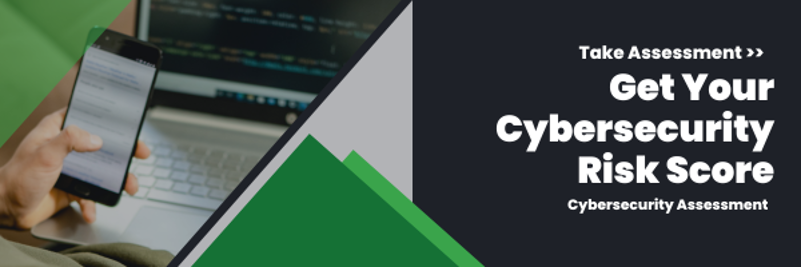Cyber crime is a growing concern for businesses of all shapes and sizes. Cyber criminals use various tactics to compromise the security of information systems, leading to severe financial, operational and reputational damage.
To develop effective cybersecurity defenses and protect your company, it’s crucial to understand the three motives behind cyber criminals’ actions and the tactics they use. Cyber criminals typically target your systems for three reasons:
- To invade your privacy
- To compromise the trustworthiness of your data
- To deny access to information
By grasping these motives and familiarizing yourself with criminals’ methods, you can better safeguard your data and systems against costly attacks that threaten your confidentiality, integrity and availability.
Read: The Top 9 Cyber Attacks Your Company Could Face
The Three Pillars of Cyber Crime
- Confidentiality – Invasion of Privacy
Confidentiality breaches involve unauthorized access to sensitive information. However, your company doesn’t have to be in healthcare or financial services to hold sensitive data that’s considered private or valuable. Cyber criminals can monetize:
- Employee information
- Customer records
- Contact lists
They’ll extract anything from email addresses to Social Security numbers, often selling this data to other criminals who compile it with information from other sources to build more sophisticated attacks. Additionally, intellectual property, such as designs, trade secrets and know-how, is a valuable commodity for those who want to undermine your competitive edge.
- Integrity – Compromises to Your Data’s Trustworthiness
You don’t hear as much about data manipulation crimes as you do about confidentiality, but as hackers become better at entering systems, the risk of this cyber crime is increasing. Cyber criminals might manipulate or alter your data to:
- Compromise decision-making
- Damage your company’s reputation
- Commit fraud for financial gain
Examples include altering payment destinations, hijacking communication systems to send unauthorized messages or modifying data to change the outcome of a situation. Such breaches occur when employees use unsecured methods to access company files or inadvertently download malware.
- Availability – Denying Access to Your Information
Availability hacks, like ransomware, can paralyze your business by disrupting access to your information or network. Cyber criminals might demand a ransom to restore access to your data or systems, threatening to disrupt operations and tarnish your reputation if you refuse.
With the increasing number of devices connected to the Internet – from smartphones to industrial machinery and the Internet of Things – hackers have an ever-growing list of targets. Small-to-medium-sized businesses (SMBs) are easy and frequent targets, but they must stay vigilant against these attacks.
Download: Cybersecurity Essentials for Sustainable Success
Examples of Cyber Crime
- Phishing: Phishing attacks are the most common example of confidentiality cyber crime. Cyber criminals use deceptive messages via email or social media to trick employees into divulging sensitive information, granting unauthorized access to networks or clicking on malicious links or attachments.
- Malware: Malware, or malicious software, helps the hacker gain unauthorized access to a device, steal data or cause damage to a system or device. It comes in numerous forms, including spyware, viruses, worms, Trojan horses, adware and botnets. Malware falls under all three categories of confidentiality, integrity and availability.
- Password attacks: Password attacks include methods like brute force attacks, where cyber criminals try to guess passwords to gain unauthorized access to systems or accounts, making this an example of confidentiality and integrity crimes.
- Man-in-the-middle attacks (MitM): In a MitM attack, cyber criminals intercept and potentially alter communication between two parties without their knowledge. This makes it another example of both confidentiality and integrity cyber crimes.
- Denial-of-service attacks (DoS): DoS attacks are an example of availability cyber crime. Cyber criminals flood a network or website with traffic, rendering it unavailable to legitimate users.
- Cross-site scripting (XSS): XSS attacks involve injecting malicious scripts into trusted websites, which then execute in the browsers of unsuspecting users. XSS attacks are an example of integrity and confidentiality crimes.
- SQL injection: SQL injection attacks involve inserting malicious SQL code into a database query, allowing attackers to access or manipulate the database. It is also an example of both confidentiality and integrity cyber crimes.
- DNS tunneling: DNS tunneling exploits the DNS protocol to transfer data, often bypassing security measures. This confidential and integrity cyber crime example is often used for data exfiltration.
- Zero-day exploit: A zero-day exploit occurs when cyber criminals target vulnerabilities unknown to the software vendor and have no available patch. This attack is an example of all three cyber crimes: confidentiality, integrity and availability.
How to Protect Your Business from Cyber Crime
- Regular employee training: Educate your staff about the latest cyber attacks and cybersecurity best practices, including how to recognize phishing attempts, avoid suspicious links and downloads and never use public Wi-Fi and. Utilize phishing simulations to gauge how effective your training is.
- Enforce strong password policies: Complex passwords include a combination of upper and lower case letters, symbols and numbers. Never reuse the same password for multiple accounts, reset passwords regularly and use a password manager to keep track of and create passwords.
- Implement security measures: Implement robust security measures, like firewalls, antivirus and antimalware software, encryption and intrusion prevention and detection systems (IPS and IDS), that address internal and external risks.
- Regular updates: Speaking of software, keep it updated with the latest patches and upgrades.
- Backup data: Regularly back up your data to a secure location, like the cloud, to protect against data loss and theft.
- Incident response plan (IRP): Develop a comprehensive IRP to respond to cyber attacks effectively and minimize damage.
- Limit access: Restrict employee access to sensitive data; they should only have access to files they need to complete their jobs.
- Deploy multi-factor authentication (MFA): MFA can help prevent hackers from gaining access by requiring another form of authentication.
- Use spam and email filters: Spam and email filters can recognize emails from suspicious sources and prevent them from ever reaching employee inboxes. Ensure employees never email sensitive information, like W-2 statements or intellectual property, even if they know the recipient.
Read: The Best Practices Against Cyber Attacks
Strengthen Your Cybersecurity Stance with Thriveon
Cybersecurity is not only an IT concern – it’s a business imperative. Many companies lack the expertise needed to combat cyber crime, leaving them vulnerable to attacks.
Thriveon, an award-winning managed service provider, offers managed IT and cybersecurity services to protect your business from the growing threat of cyber crime. We provide cybersecurity expertise and technology tools to safeguard your organization, allowing you to focus on achieving your goals without the burden of constant security threats.
Take action today and schedule a meeting with us to learn how we can help you protect your business from cyber threats.

